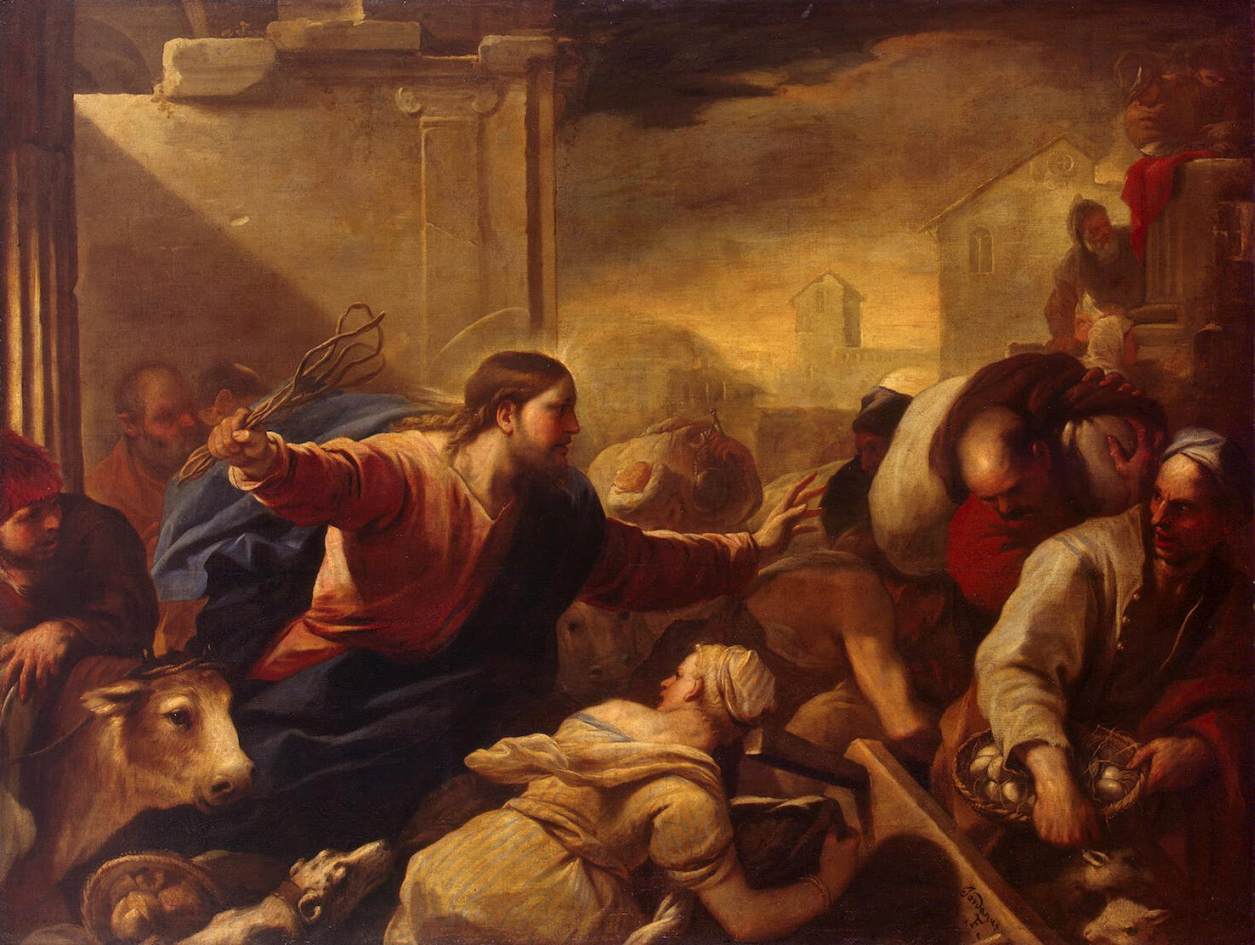On the next day, when they had left Bethany, He became hungry. Seeing at a distance a fig tree in leaf, He went to see if perhaps He would find anything on it; and when He came to it, He found nothing but leaves, for it was not the season for figs. He said to it, “May no one ever eat fruit from you again!” – Mark 11:12-14
During that week in Jerusalem, Jesus and his disciples spent the nights with friends in Bethany, two miles outside of the city. Each morning, they would walk into Jerusalem. On that Monday morning, just four days prior to his crucifixion, Jesus became hungry on the walk in. Seeing a leafy fig tree, he looked for fruit. With fig trees, where there are leaves, there should be figs. Green figs are edible, but since it wasn’t harvest season, there should still be fruit on the tree.
When he found no figs, Jesus cursed the tree. This seems out of character for Jesus, until his action is put in the context of his culture and community. Throughout his public ministry, especially as he became more known and revered, the Jewish religious leaders held him in contempt. Jesus’ teaching of our dependence on God’s righteousness and not our own flew in the face of the Pharisaical teaching of the day – that of strict adherence to Jewish law as the only hope of finding favor with God. For Jesus, the leafy barren fig tree must have been a picture of religious Jews of that day, all flash and finery but no fruit of faith.
Jesus was left still physically hungry and then also spiritually hungry – for this people of the Book to receive the good news that the Messiah had come.
Finally, arriving back in Jerusalem, Jesus was deeply troubled by what he found inside the Temple. The crowds of Passover pilgrims did not disturb him, but temple grounds turned marketplace did. In this sanctified place, meant only for worship, there were money-changers and sellers of animals for sacrifice, right in the Court of the Gentiles – in the only place where non-Jewish God-believers could worship. And Jesus entered the temple and drove out all those who were buying and selling in the temple, and overturned the tables of the money changers and the seats of those who were selling doves. And He said to them, “It is written, ‘MY HOUSE SHALL BE CALLED A HOUSE OF PRAYER’; but you are making it a ROBBERS’ DEN.” – Matthew 21:12-13
And Jesus entered the temple and drove out all those who were buying and selling in the temple, and overturned the tables of the money changers and the seats of those who were selling doves. And He said to them, “It is written, ‘MY HOUSE SHALL BE CALLED A HOUSE OF PRAYER’; but you are making it a ROBBERS’ DEN.” – Matthew 21:12-13
Often in film depictions of Jesus cleansing the temple, he appears a crazed individual, flailing about, throwing tables and flinging pigeons into the air. I can’t even imagine it that way. We can’t know how it happened except that in Jesus’ anger, he did not sin. I know the Jesus Film is just another director’s film rendering, but in this scene, Jesus showed great restraint. Disturbed at the buying and selling that actually kept believing Gentiles from worshipping, he moved to correct the situation. He was unafraid of the temple officials, burning with zeal for his Father to be truly worshipped in that place,
Zeal for Your house has consumed me, And the reproaches of those who reproach You have fallen on me. – Psalm 69:9
Later in the week, he himself would be the one sold – for 30 pieces of silver, betrayed by one of his own disciples, to satisfy the wrath of the religious leaders. That story is for another day.
This Holy Monday, we are drawn again to this Messiah who teaches us that the way we live our lives matters but not more than the way we relate to God. He is holy, and in His righteousness, we stand…on solid ground.
Holy Week – Day 2: Monday Jesus Clears the Temple
Reasoning Why Jesus Cursed the Fig Tree
Cleansing the Court of the Gentiles
YouTube Video with Lyrics of In Christ Alone by Stuart Townend & Keith Getty
Jesus Film Media – website & app to watch videos
Photo Credit: Fig Tree by Bob Orchard and “Expulsion of the Moneychangers from the Temple” by Luca Giordano


the fig tree has always seemed confusing to me – but the way you put it it is a very good image of meaningless – the appearance of fruitfulness from a distance, but producing nothing but leaves.
*meaningless appearance – all the energy that could be put toward fruit has been used only for a show of fine green leaves
Thanks for taking the time to comment, Christie. Appearances are pretty close to meaningless…unless they point to God. If they point to God, they resonate with real.